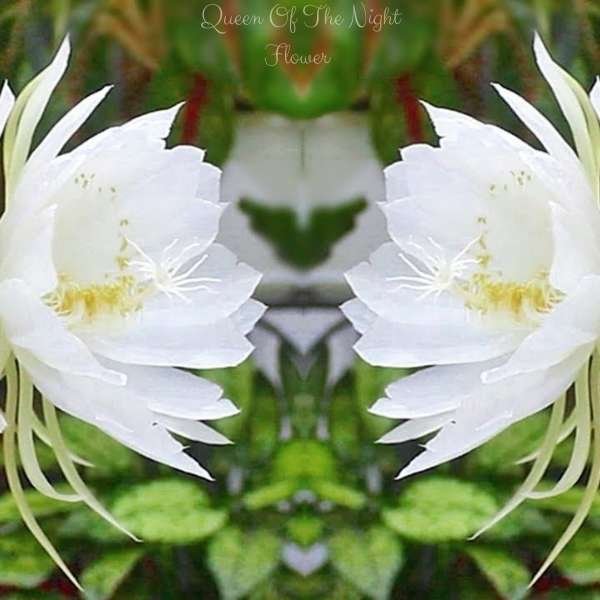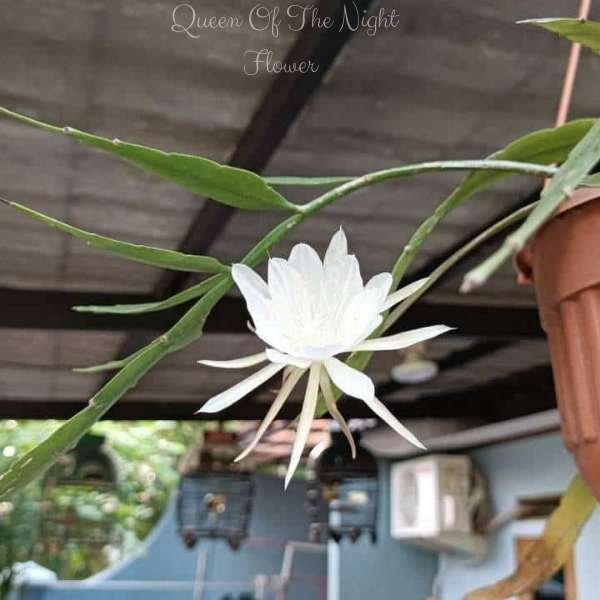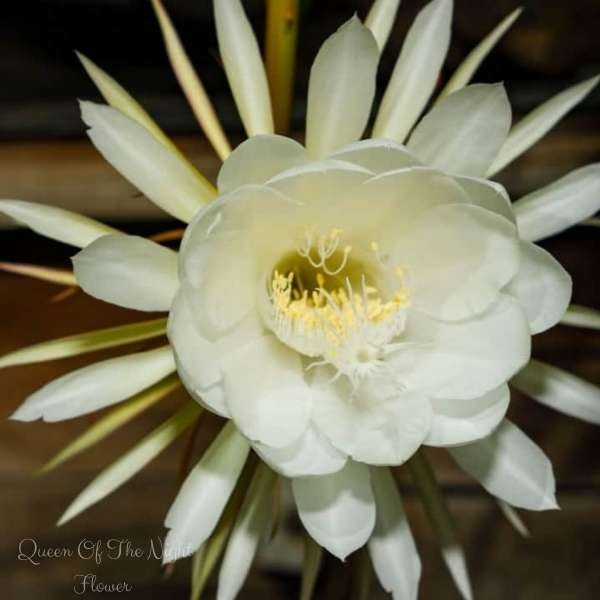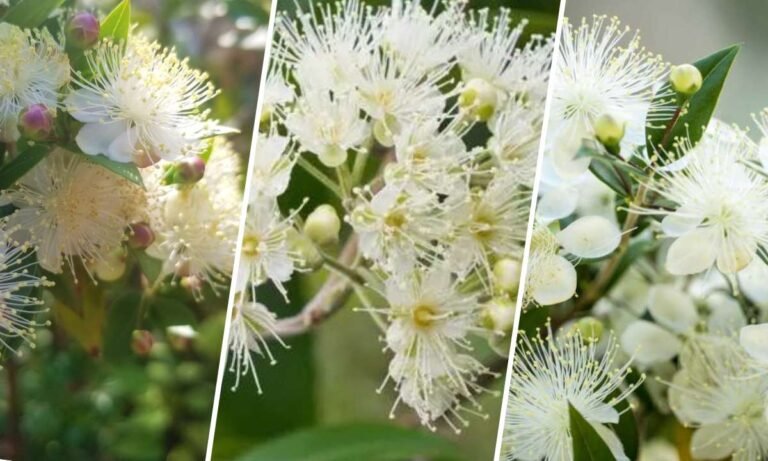Introduction
The Queen of the Night flower, also known as Epiphyllum oxypetalum, is a rare and beautiful flower that blooms only at night. Often called the Night-blooming Cereus, this flower is known for its large, fragrant blooms that appear and disappear quickly. In this guide, we explore the meanings, cultural significance, and special traits of this amazing flower.

The Botanical Marvel: Epiphyllum Oxypetalum
Origins and Habitat
The Queen of the Night flower is part of the cactus family and originally comes from the tropical rainforests of Central America. It grows in the shady areas of dense forests, attaching itself to tree trunks and branches. This environment of high humidity, moderate temperatures, and indirect sunlight helps shape its unique flowering habits.
Physical Characteristics
Epiphyllum oxypetalum has long, flat, and succulent stems that can grow several feet long. These stems have aerial roots that help the plant cling to its host. The most striking feature is its large, white flowers, which can reach up to 12 inches in diameter and give off a sweet, enchanting fragrance. These flowers bloom only at night and wither by morning, adding to their mysterious charm.
Symbolism and Cultural Significance
Mystical Symbolism
The Queen of the Night flower carries deep symbolic meanings in various cultures. Its night-time blooming is linked to the mysteries of the night, representing hidden and unseen things. The short-lived appearance of its flowers is often seen as a symbol of the fleeting nature of beauty and life, reminding us to appreciate the moment and cherish what is temporary.
Cultural Reverence
In many cultures, this flower is respected for its mystical and spiritual meanings. In Mexican folklore, it is thought to bring good luck and protect against evil spirits. Its blooming is considered a sign of important events or changes, symbolizing transformation and new beginnings. In Chinese culture, known as “Tan Hua,” the flower’s blooming is eagerly anticipated and celebrated.

The Fascination with Night Blooming
Nocturnal Blooming Cycle
The night-time blooming cycle of the Queen of the Night fascinates both botanists and flower lovers. The plant typically blooms once a year during the warm summer months. The flowers start to open at dusk, fully bloom around midnight, and close by early morning. This blooming pattern is an adaptation to its natural environment, where night-time pollinators like moths and bats are active.
Pollination Mechanism
The pollination of Epiphyllum oxypetalum is a remarkable process. The flower’s strong fragrance attracts night-time pollinators, ensuring successful reproduction. Bats and moths, drawn by the scent, play a crucial role in transferring pollen from one flower to another. This relationship highlights the intricate connections within the ecosystem and the importance of each species in maintaining biodiversity.
Cultivating the Queen of the Night Flower
Growing Conditions
To grow the Queen of the Night flower, you need to mimic its natural habitat as closely as possible. The plant thrives in well-draining soil rich in organic matter, prefers bright but indirect sunlight, and needs high humidity levels. Keeping the plant in a warm environment, with temperatures between 60°F to 80°F, is crucial for its growth and blooming.
Propagation Methods
You can propagate Epiphyllum oxypetalum using stem cuttings. Choose healthy, mature stems and let them dry for a few days before planting them in well-draining soil. Keep the cuttings in a humid environment with indirect sunlight until roots develop. Regular misting and careful watering are essential during this process to prevent rot and encourage root growth.
Caring for the Queen of the Night Flower
Watering and Fertilization
The Queen of the Night flower needs a balanced watering schedule. Overwatering can cause root rot, while underwatering can lead to dehydration and stunted growth. Water the plant thoroughly, allowing the soil to dry out between waterings. Use a balanced, water-soluble fertilizer during the growing season to promote healthy growth and flowering.
Pruning and Maintenance
Pruning is important for keeping the Queen of the Night flower healthy. Regular pruning helps control the plant’s size and encourages more vigorous growth. Remove dead or damaged stems to improve airflow and reduce the risk of diseases. Prune after the flowering season to avoid removing potential flower buds for the next cycle.

Conclusion
The Queen of the Night flower is a botanical wonder that amazes with its beauty, mystery, and symbolism. From its night-time blooming to its cultural significance, the Epiphyllum oxypetalum offers a glimpse into the wonders of nature and the intricate connections within ecosystems. Growing and caring for this plant requires understanding its unique needs and mimicking its natural habitat, but the reward is a breathtaking display of one of nature’s most elusive blooms.




